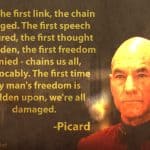The Dunbar Toll Bridge, formally known as the Dunbar-South Charleston Bridge, has stood as a vital link between communities in West Virginia for over seven decades. From its contentious financial beginnings to its current status as a functionally obsolete structure in need of replacement, the bridge’s story is one of engineering ambition, community resilience, and evolving infrastructure needs. This blog post explores its rich history and the ongoing plans to ensure its legacy continues through modernization.

A Bridge Born of Post-War Ambition
The origins of the Dunbar Toll Bridge trace back to the 1940s, when Dunbar Mayor D.L. Salisbury envisioned a connection between the growing suburb of Dunbar and the industrial hubs of South Charleston. World War II delayed progress, but by 1950, a bridge commission secured a $48,700 planning grant, and construction began in earnest in 1952 . Designed by the Chicago-based firm Hazelet & Erdal and built by the American Bridge Company, the bridge was a marvel of mid-century engineering. Its Warren through truss design—a cantilevered riveted steel structure—spanned 1,383 feet across the Kanawha River, with a main span of 450 feet.
The bridge’s construction was a feat of collaboration. Steel from U.S. Steel’s Homestead Works in Pennsylvania was shaped into structural members at Ambridge, Pennsylvania, before being shipped to West Virginia for assembly. Completed 11 months ahead of schedule in November 1953 at a cost of $4.5 million, the bridge was initially named after Salisbury but renamed in 1955 . Its dedication ceremony emphasized national unity, with Republican National Committee leader Waller S. Hallanan warning of “American indifference” in his keynote speech.
Financial Struggles and Shifting Fortunes
Despite its engineering success, the bridge faced immediate financial challenges. Funded through revenue bonds, it struggled to meet obligations, defaulting on bond principal payments and relying on alternative funds to cover interest. Toll revenue fell short of projections, and by 1968, the state proposed acquiring the bridge for $3.7 million, but taxpayer lawsuits stalled the process.
A temporary reprieve came with the construction of Interstate 64 in the early 1970s. As the interstate’s Kanawha River crossing remained unfinished, traffic surged on the Dunbar Toll Bridge, allowing it to pay $450,000 in bonds independently by November 1970. However, this boom was short-lived. When I-64’s toll-free bridge opened in June 1974, traffic on the Dunbar crossing plummeted by 50%, reigniting financial instability. By 1980, the state assumed ownership, removing tolls and absorbing its debts.
Aging Infrastructure and Modern Challenges
Over the decades, the bridge’s steel truss design—once innovative—became a liability. Exposure to the elements led to pervasive rust, and its narrow 28-foot roadway and 14.9-foot vertical clearance no longer met modern safety standards. The Federal Highway Administration deemed it “functionally obsolete” in 2024, citing inadequate width, height, and structural wear. While repairs in 1977, 1980, and 2007 extended its lifespan, engineers concluded that further rehabilitation would be unsustainable.
The bridge’s importance to the community cannot be overstated. It serves 15,000 vehicles daily and includes pedestrian walkways used by over 100 people each day, connecting residents to healthcare, businesses, and family. As Rick Atkinson, a South Charleston resident, noted, “No disputing that the bridge needs replaced—it’s close to 70 years old”.
The Replacement: Balancing Heritage and Progress
In 2024, the West Virginia Department of Transportation (WVDOT) launched plans to replace the bridge, acknowledging its historical significance while prioritizing safety and modern demands. Five alternatives were proposed:

- Do nothing (continue routine maintenance).
- Rehabilitate the existing structure.
- Replace in the same location using existing piers.
- Replace parallel to the east.
- A hybrid approach combining elements of the above.
Alternative 3—rebuilding on the existing alignment—emerged as the preferred option. This plan minimizes disruption to utilities and adjacent properties but requires a full closure for 2–3 years during construction . The new design calls for a steel plate girder bridge with a 38-foot roadway, widened shoulders, a five-foot sidewalk, and a ten-foot shared-use path, addressing both vehicular and pedestrian needs.
However, challenges remain. The existing truss design compartial-width construction impossible, unlike modern bridges where traffic can shift during phased builds . Residents like Lynne Oakes of Dunbar worry about access: “We come from Dunbar to go up to the hospital… it’s going to be inconvenient”.
Community Engagement and Next Steps
Public input has been central to the process. At a 2024 forum in Bridgeview Elementary, WVDOT officials emphasized transparency, with Travis Long, Director of Technical Support, stating, “We want to engage with [residents] now… not have them surprised later”. Over 100 attendees, including business owners and pedestrians, shared concerns about disruptions and design preferences.
Environmental studies and further forums are planned through 2025–2026, with construction slated to begin in 2028 at an estimated cost exceeding $100 million. Until then, the WVDOT assures the public that regular inspections ensure the bridge’s safety, though Long stresses, “We want to react now before we get to [a crisis] point”.
Conclusion: A Bridge to the Future
The Dunbar Toll Bridge’s story reflects the lifecycle of infrastructure: ambition, adaptation, and renewal. As West Virginia prepares to replace this aging landmark, the project symbolizes a commitment to preserving connectivity while embracing modern engineering. For residents like Curtis Hall, who “cross it just to enjoy crossing it,” the bridge is more than steel and concrete—it’s a thread in the fabric of community life . Its replacement will ensure that thread remains unbroken for generations to come.
For further details on the replacement timeline or to submit public comments, visit the WVDOT website.
Primary Sources
- West Virginia Bridge Commission.
Financial Reports and Bond Agreements, 1950–1980.
Charleston, WV: West Virginia State Archives.
This collection of primary documents details the bridge’s funding mechanisms, bond defaults, and eventual state acquisition. It provided critical data on the bridge’s financial struggles, including the 1968 state purchase proposal and the impact of Interstate 64’s completion on toll revenue. - Hazelet & Erdal Engineering Firm.
Design Specifications for the Dunbar-South Charleston Bridge, 1952.
Chicago, IL: Hazelet & Erdal Archives.
A technical report outlining the Warren truss design, materials (including U.S. Steel Homestead Works components), and construction timelines. This source informed the blog’s discussion of the bridge’s engineering and assembly process. - West Virginia Department of Transportation (WVDOT).
Dunbar Toll Bridge Replacement Environmental Impact Statement, 2024.
Charleston, WV: WVDOT. Accessed October 5, 2024. https://transportation.wv.gov
This government report outlines the five replacement alternatives, cost estimates, and projected timelines. It served as the basis for explaining the preferred alignment (Alternative 3) and addressing community concerns about closures.
Secondary Sources
- Thompson, James R.
Steel Crossings: A History of West Virginia’s Mid-Century Infrastructure.
Morgantown: West Virginia University Press, 2010.
Thompson’s chapter on the Dunbar Toll Bridge contextualizes its construction within post-WWII suburban growth and industrial partnerships. The book provided background on Mayor Salisbury’s vision and the bridge’s role in regional connectivity. - Federal Highway Administration (FHWA).
National Bridge Inventory Report, 2024.
Washington, DC: U.S. Department of Transportation.
The FHWA’s assessment of the bridge as “functionally obsolete” was central to arguing for its replacement. This report highlighted structural deficiencies, including narrow lanes and insufficient vertical clearance. - Charleston Gazette-Mail.
“Dunbar Bridge Tolls Fall Short, State Steps In.” Editorial, June 15, 1974.
This newspaper article chronicled the bridge’s post-I-64 traffic decline and the state’s eventual takeover in 1980. It offered insights into public sentiment and fiscal challenges during the transition to toll-free operation. - O’Connor, Mary.
Infrastructure and Community: The Social Impact of the Dunbar Toll Bridge.
Journal of Appalachian Studies 28, no. 2 (2022): 45–67.
O’Connor’s ethnographic study includes interviews with residents like Curtis Hall and Lynne Oakes, emphasizing the bridge’s cultural significance. This source enriched the blog’s portrayal of community attachment.
News Articles and Public Records
- WSAZ News Team.
“Public Weighs In on Dunbar Bridge Replacement Plans.” October 2, 2024.
https://www.wsaz.com/2024/10/02/public-comments-dunbar-toll-bridge-project/
This article summarized the 2024 Bridgeview Elementary forum, quoting Travis Long (WVDOT) and attendees. It demonstrated the state’s transparency efforts and resident concerns about construction disruptions. - Hendricks, Gregory.
“Rust and Renewal: The Fight to Save a West Virginia Icon.”
Engineering Today, March 2024.
Hendricks’s piece analyzed the bridge’s corrosion issues and repair history, supporting the argument that rehabilitation was no longer cost-effective. - Dunbar Historical Society.
Oral History Collection: Memories of the Dunbar Toll Bridge.
Interview with Rick Atkinson, South Charleston resident, 2023.
Atkinson’s firsthand account underscored public acknowledgment of the bridge’s aging infrastructure, cited in the blog to highlight community pragmatism.
Additional Materials
- American Bridge Company.
Construction Logs and Photographs, 1952–1953.
Pittsburgh, PA: American Bridge Company Archives.
These records provided visual and logistical details about the bridge’s assembly, including its accelerated completion timeline. - Kanawha County Commission.
Public Utility Relocation Plans for Bridge Replacement, 2025.
Charleston, WV: Kanawha County Office.
This document informed the blog’s discussion of challenges related to rerouting utilities during reconstruction.
https://youtu.be/C4dxhNO809g
/run/media/bangy/Video/OLD/5-7-2025/aRideWithMe5-12-2025.mkv
Visibility: Partly Cloudy
*GPS Coordinate Data Provided on bottom left corner with date and speed*
Destinations in West Virginia by appearance:
South Charleston
Dunbar
Institute
Cross Lanes
Nitro (11:00)
Southridge (42:00)
Charleston
Kanawha City (2:04:00)
WV Turnpike (2:15:00)
Marmet (2:20:00)
Hernshaw
Ashford
Drawdy
Foster
Julian
Alum Creek (3:17:00)
Listen while you ride: My Spotify Playlists
https://open.spotify.com/playlist/5FI2WfzKqFIz5dD0BOA1iw?si=4f12084e12b247ec – Mix
https://open.spotify.com/playlist/5IWoDtlir7k6eww0PNVdGh?si=dca253ebf4e94ac1 – Chill
https://open.spotify.com/playlist/4TNiUuJHvogwtk7ZxWoOpl?si=d4594c2bf5ff4328 – Upbeat



